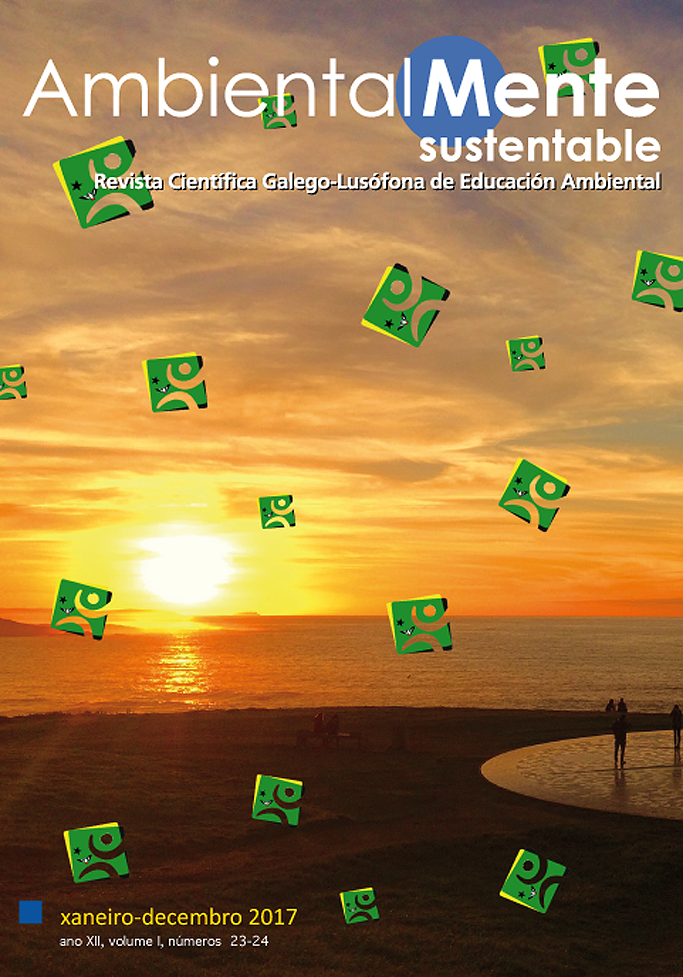Project Feeding More, Wasting Less: Leading young students to a sensitive look regarding the mitigation of food wastage
Main Article Content
Abstract
Food wastage has been fully debated due to the need to eradicate hunger and environmental problems. In this respect, UFRGS CLN developed in municipal schools of Caxias do Sul/RS, supported by the City Hall, the University of Caxias do Sul and the Pampeanos Institute of Environmental Preservation, an environmental education project focused on combating food wastage. The project included more than 1,100 students in grades 6 through 9 of elementary school. The project included extracurricular activities proposed by a multidisciplinary group. For example, vegetable gardens were planted in schools, seminars dealing with the relationship between food waste and the environment were developed; as well as competitions; and composting and cooking workshops. For the development of the actions, the City Hall chose five schools with social vulnerability situations. Considering the total indications from schools, 84.7% point the students were satisfied with the activities and 93.7% stated the activities were instructive. Regarding students information, 50.0% of the indications show that were taken initiatives at home after the project started in school. The results are considered satisfactory, but there are still opportunities for enhancement.
Keywords:
Downloads
Article Details
References
Barton, A. D.; Beigg, C. L.; MacDonald, I. A.; Allison, S. P. (2000). High food wastage and low nutritional intakes in hospital patients. Clinical Nutrition, v. 19, n. 6, p. 445-449.
Bastos, A. (2015). Pesquisa identifica fatores de desperdício de alimentos em famílias de baixa renda. Embrapa. Disponível em: <https://www.embrapa.br/web/mobile/noticias/-/noticia/3381192/pesquisa-identifica-fatores-de-desperdicio-de-alimentos-em-familias-de-baixa-renda>. Acesso em: 21 out. 2016.
Brasil. (1999). Lei nº 9795, de 27 de abril de 1999. Dispõe sobre a educação ambiental, institui a Política Nacional de Educação Ambiental e dá outras providências. Disponível em: http://www.planalto.gov.br/ccivil_03/leis/L9795.htm. Acesso em: 19 dez. 2016.
Brasil. (2016). 2º Plano Nacional de Segurança Alimentar e Nutricional (PlanSAN 2016-2019). Brasília, DF. Disponível em: http://www4.planalto.gov.br/consea/comunicacao/noticias/2016/plano-nacional-de-seguranca-alimentar-e-nutricional-ja-esta-disponivel-na-internet. Acesso em: 21 out. 2016.
CELAC – Comunidad de Estados Latinoamericanos y Carineños (2016). CELAC 2025- Seguridad alimentaria, nutrición y erradicación del hambre: Elementos para el debate y la cooperación regionales. Santiago. Disponível em: http://repositorio.cepal.org/bitstream/handle/11362/40348/1/S1600707_es.pdf. Acesso em: 21 out. 2016.
CONSEA – Conselho Nacional de Segurança alimentar e nutricional (2015). Conceitos: Segurança Alimentar e Nutricional e Soberania Alimentar. Brasília. Acesso em: http://www4.planalto.gov.br/consea/acesso-a-informacao/institucional/conceitos. Disponível em: 21 out. 2016.
Dias, D. M.; Martínez, C. B.; Barros, R. T. de V. (2014). Estimativa da geração de resíduos sólidos urbanos como subsídio para ações voltadas à sustentabilidade ambiental. Revista Brasileira de Ciências Ambientais, n. 33.
FAO - Food and Agriculture Organization of the United Nations (2011). Global Food Losses and Foot Waste. Roma. Disponível em: http://www.fao.org/docrep/014/mb060e/mb060e00.pdf. Acesso em: 30 jan. 2017.
FAO - Food and Agriculture Organization of the United Nations (2013). Food Wastage Footprint: Impacts on Natural Resources. Roma. Disponível em: http://www.fao.org/docrep/018/i3347e/i3347e.pdf. Acesso em: 12 fev. 2016.
FAO - Food and Agriculture Organization of the United Nations (2014). A fome no mundo cai, mas existem ainda 805 milhões de pessoas que sofrem de desnutrição crônica. Roma. Disponível em: http://www.fao.org/news/story/pt/item/243923/icode. Acesso em: 31 jan. 2017.
IMECHE. Institution of Mechanical Engineers (2013). Global Food: Waste Not, Want Not. Londres. Disponível em: http://www.imeche.org/Libraries/Reports/Global_Food_Report.sflb.ashx. Acesso em: 21 jan. 2012.
Katajajuuri, J.-M.; Silvennoinen, K.; Hartikainen, H., Heikkilä, L.; Reinikainen, A. (2014). Food waste in the Finnish food chain. Journal of Cleaner Production, v. 73, p. 322-329.
Kosseva, M. R. (2013). Causes and Challenges of Food Wastage. In: Food Industry Wastes. Londres: Academic Press. Disponível em: http://www.sciencedirect.com/science/article/pii/B9780123919212000184. Acesso em: 12 fev. 2016.
Loureiro, C. F. B. (2007). Educação ambiental crítica: contribuições e desafios. In: Mello, S. S. de; Trajber, R. (Coord.). Vamos cuidar do Brasil: conceitos e práticas em educação ambiental na escola. Ministério da Educação. Coordenação Geral de Educação Ambiental: Ministério do Meio Ambiente, Departamento de Educação Ambiental: UNESCO. Brasília. Disponível em: http://portal.mec.gov.br/secad/arquivos/pdf/educacaoambiental/educacaoambiental_naescola.pdf. Acesso em: 30 jan. 2017.
Mandelli, S. M. de C. (1997). Variáveis que interferem no comportamento da população urbana no manejo de resíduos sólidos domésticos no âmbito das residências. 1997. 267 f. Tese (Doutorado em Educação) – Universidade Federal de São Carlos, São Carlos.
Miller, G. T.; Spoolman, S. E. (2012). Environmental Science. Belmont: Brooks/Cole, Cengage Learning.
Nonenmacher, S. E. B.; Kalsing, R. M. S. (2012). Desperdício como tema gerador para um trabalho de educação ambiental no IFC – Campus Concórdia. In: Mendonça, A. W.; Siqueira, A. B.; Marcomin, F. E. (Org.). Educação, Sociedade e Meio Ambiente no estado de Santa Catarina: múltiplas abordagens. São Leopoldo: Oikos, p. 85-98.
Okazaki, W. K.; Turn, S. Q.; Flachsbart, P. G. (2008). Characterization of food waste generator: A Hawaii case study. Waste Management, v. 28, p. 2483-2494.
Pirani, S. I.; Arafat, H. A. (2016). Reduction of food waste generation in the hospitality industry. Journal of Cleaner Production, v. 132, p. 129-145.
Pistorello, J.; De Conto, S. M.; Zaro, M. (2015). Geração de resíduos sólidos em um restaurante de um hotel da Serra Gaúcha, Rio Grande do Sul, Brasil. Engenharia Sanitária e Ambiental, v. 20. n. 3, p. 337-346.
Porpino, G.; Parente, J.; Wansink, B. (2015). Food waste paradox: antecedents of food disposal in low income households. International Journal of Costumer Studies, v. 39, n. 6.
Sonnino, R.; McWilliam, S. (2011). Food waste, catering practices and public procurement: a case study of hospital food systems in Wales. Food Policy, v. 36, n. 6, p. 823-829.
Stancu, V.; Haugaard, P.; Lahteenmaki, L. (2016). Determinants of consumer food waste behaviour: Two routes to food waste. Appetite, v. 96, p. 7-17.
Stefan, V.; Herpen, E. V.; Tudoran, A. A.; Lahteenmaki, L. (2013). Avoiding food waste by Romanian consumers: The importance of planning and shopping routines. Food Quality and Preference, v. 28, n. 1, p. 375-381.
Williams, H.; Wikström, F.; Otterbring, T.; Löfgren, M.; Gustafsson, A. (2012). Reasons for household food waste with special attention to packaging. Journal of Cleaner Production, v. 24, p. 141-148.


